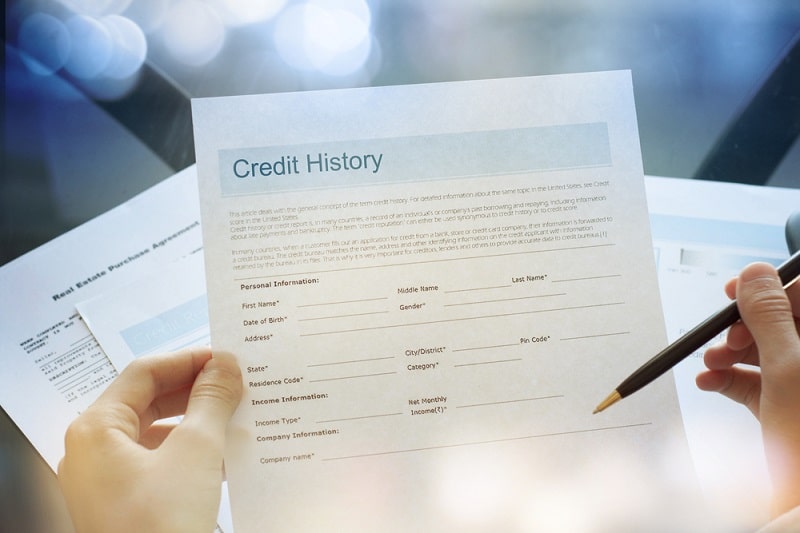Authorized User Tradelines: Shortcut to Better Credit?
Looking for a way to give your credit score a lift without taking out a loan or opening a new credit card? Becoming an authorized user on someone else’s credit account might be a shortcut worth considering.

This strategy has been around for decades, but it’s gotten more attention lately from people trying to qualify for better rates on mortgages, car loans, or even rental applications. It’s simple in theory—but there are rules, risks, and limits you need to know before jumping in.
What Are Authorized User Tradelines?
An authorized user tradeline is a credit account that gets added to your credit report when someone includes you as an authorized user on their credit card. It’s a way to “piggyback” on someone else’s strong credit history—legally.
When the account is in good shape, this can give your credit score a boost. Lenders see the positive payment history, credit limit, and account age, and that information gets factored into your credit profile.
But it’s not guaranteed to help. If the account isn’t well-managed, it could actually hurt your credit score. That’s why knowing how it works—and what to look for—is key before jumping in.
What Is an Authorized User?
An authorized user is someone who’s added to another person’s credit card account. They get access to use the card for purchases, but they’re not legally responsible for making payments. That responsibility stays with the primary account holder.
Even though you’re not liable for the debt, the account still gets reported to your credit report by most credit card issuers. That means the account’s age, balance, credit limit, and payment history could affect your credit score.
Some banks report authorized user accounts to all three credit bureaus. Others don’t report them at all. It’s worth checking with the card issuer before getting added to make sure it will actually show up.
What Is a Tradeline (And Why It Matters)?
A tradeline is any credit account listed on your credit report. That includes credit cards, loans, lines of credit—anything with a balance, payment history, and credit limit.
When you become an authorized user, that credit card tradeline shows up on your credit report too. If the account has been open for years, has a perfect payment history, and stays well below its credit limit, it can help improve your credit score by:
- Extending your credit history – The age of the account counts, even if you were just added recently.
- Lowering your credit utilization – If the card has a high limit and low balance, it can reduce your overall usage percentage.
- Adding positive payment history – On-time payments from the primary user reflect well on your profile.
But if the account has late payments or high balances, those negatives can show up too. That’s why the quality of the tradeline matters just as much as the fact that it’s being added.
How Authorized User Tradelines Affect Your Credit
When you're added as an authorized user, the credit card account typically gets reported to your credit report. If the account has a strong history—on-time payments, low balance, and a long track record—it can help improve your credit score. That’s because credit scoring models consider factors like length of credit history, credit utilization, and payment history.
The key is that you get the benefit of someone else’s positive credit behavior. But if the account is mismanaged or has past issues, those negatives can show up too. Not all credit scoring models weigh authorized user accounts the same way, but most do factor them in to some degree—especially FICO 8 and earlier versions.
When It Makes Sense to Become an Authorized User
Becoming an authorized user can make sense if you’re trying to build credit from scratch or recover from a rough patch. It’s often used by younger adults, spouses, or family members who want to strengthen their credit profiles without applying for new credit themselves.
It also makes sense when you're preparing for a major loan—like a mortgage—and just need a small boost to qualify for a better interest rate. But for it to work, the account you're added to needs to be in excellent shape.
How Much Can Your Credit Score Improve?
There’s no set number, but it’s common to see a jump of 20 to 50 points—sometimes more—if your credit file is thin or your scores are in the low-to-mid range. The impact depends on a few factors:
- How established your own credit profile is
- Whether the account lowers your overall credit utilization
- How old and clean the tradeline is
If your credit report already includes late payments, collections, or maxed-out cards, the boost may be limited.
What Makes a “Good” Account to Be Added To?
Not all accounts will help. For a tradeline to improve your credit score, it should meet these criteria:
- Age – The account has been open for at least two years
- Payment history – No late payments, ever
- Utilization – The balance stays below 10% of the credit limit
- Reporting – The card issuer reports authorized users to all three credit bureaus
Avoid accounts that carry high balances or have spotty payment records. Those can hurt more than help.
Can Authorized User Tradelines Hurt Your Credit?
Yes, they can. If the account you’re added to has missed payments or high balances, those negative marks can show up on your credit report. That could lower your credit score instead of raising it.
You also run the risk of the primary cardholder changing their behavior. If they start charging more than usual or fall behind on payments, you’ll feel the impact—even if you never used the card yourself. And if the account gets closed, you could lose that credit history overnight.
That’s why it’s important to only be added to accounts that are consistently managed well—and to monitor your credit report closely after you’re added.
How Long Does It Take for a Tradeline to Appear?
Once you're added as an authorized user, it usually takes 30 to 60 days for the tradeline to show up on your credit report. In some cases, it can appear sooner—especially if you’re added right before the card’s statement closing date.
Every credit card issuer reports on a different schedule, so there’s no universal timeline. If you're doing this to improve your credit before applying for a loan, wait until the tradeline is confirmed on your credit report before moving forward.
Why a Tradeline Might Not Show Up on Your Credit Report
Not all authorized user tradelines show up, even when everything seems like it should work. Some common reasons include:
- The issuer doesn’t report authorized users – Some credit card companies only report the primary account holder.
- Address mismatch – Some banks only report authorized users who share the same mailing address as the primary cardholder.
- Credit report lock or freeze – If your credit report is frozen, it can block new tradelines from being added.
- Fraud flags or security alerts – These can also prevent updates from showing up until resolved.
- Clerical error – A typo in your name, date of birth, or Social Security number can stop the account from reporting properly.
If the tradeline hasn’t shown up after 60 days, call the card issuer to confirm whether they report authorized users and that your information was entered correctly.
Is It Legal to Buy Authorized User Tradelines?
Yes, it’s legal—at least for now. There are companies that sell access to seasoned tradelines by adding you as an authorized user on someone else’s credit card. You don’t get access to the card itself—just the credit reporting benefit.
This practice is sometimes used by people trying to quickly improve their credit scores before applying for a loan. While legal, it’s a gray area. Lenders and credit bureaus don’t exactly encourage it, and credit scoring models are starting to crack down on it.
Newer versions of FICO and VantageScore are getting better at spotting and ignoring these types of tradelines, especially if they look suspicious or don’t come from someone you have a clear relationship with.
Should You Pay for a Tradeline?
It depends on your situation. Some people pay hundreds—or even thousands—of dollars to be added to a high-quality tradeline for a few months. The idea is that a quick credit score boost can save much more in the long run through lower interest rates or loan approval.
But it’s risky. There’s no guarantee the tradeline will show up, and newer scoring models may ignore it. Some lenders may even flag your file if they think you’re trying to game the system.
If you go this route, only work with a company that offers a refund if the tradeline doesn’t post. And understand that the boost, if any, is usually temporary.
Final Thoughts
Becoming an authorized user on the right account can help improve your credit score—especially if you're just getting started or need a short-term boost. But it’s not a magic fix, and it’s not a replacement for responsible credit habits.
If you’re considering paying for a tradeline, weigh the cost against what you’re trying to achieve. In many cases, paying down debt, making on-time payments, and keeping your balances low will move the needle more—without the risk.



